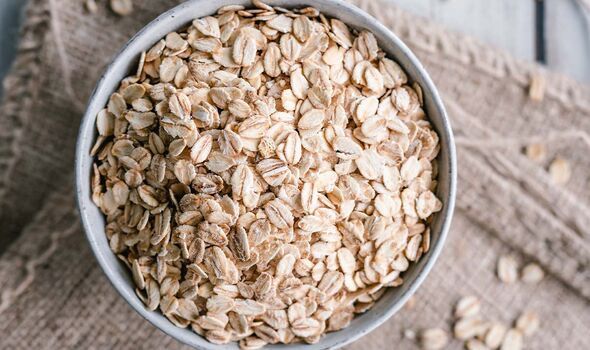There is good news for all those who avail themselves of the SNAP (Supplemental Nutrition Assistance Program) benefits, as the COLA increase applied to SNAP benefits is estimated to range from approximately 2.7% to 2.8% in 2026 compared to 2.5% in 2025. These latest projections are based on analyses carried out by various organizations, including The Senior Citizens League and other financial analysis firms.
The Cost-of-Living Adjustment (COLA) refers to an annual increase in federal benefits and allowances, including the SNAP benefits. These benefits are provided in the form of payments to those people who belong to low-income households and meet certain income and need standards.
Check current requirements to apply for SNAP benefits in 2025
As of now, the SNAP program maintains its basic eligibility criteria. It is applicable to all 50 states and American territories. It also includes some Indigenous nations.
According to the regulations, the first eligibility criterion is income levels. All those households which seek to apply for SNAP benefits must prove that their gross monthly income is at or below 130% of the Federal Poverty Line (FPL). Moreover, the net income must not exceed 100% of the FPL.
The second component is the available financial resources. This calculation includes the value of bank accounts and cash, with a general asset limit set at $2,750 for most households. This limit is increased to $4,250 for households that include a person age 60 or older or an individual with a documented disability.
Notably, the regulations do not include certain assets from this calculation, such as the value of the primary residence or a family vehicle.
What are the residency, immigration status, and work requirements to apply for SNAP program
All those who are planning to take part in the SNAP program must know that it is restricted to US citizens. Certain specific groups of legal immigrants who meet specific criteria. Applicants must also reside in the state where they apply for benefits, verifying their residency status through relevant documentation.
There are chances that there may be additional requirements at the local level as well. This requirement applies to beneficiaries in the (Able-Bodied Adults Without Dependents) ABAWD category. They are those individuals who are between the ages of 18 and 54 who are able to work and have no dependent children.
These individuals must demonstrate that they are employed, participating in a training program, or actively seeking work, with a minimum amount of weekly hours. Always visit your nearest SNAP office before applying to learn about your eligibility requirements. Use the USDA’s official SNAP locator here.
What is the relationship between the COLA and the SNAP food stamps?
The COLA represents the annual adjustment applied by the SSA to Social Security benefits. On the other hand, SNAP maximum amounts are adjusted annually by the US Department of Agriculture (USDA) through the Food and Nutrition Service (FNS).
This adjustment is based on the Thrifty Food Plan and the changing cost of the food basket, using data collected through June and effective every October 1.
1 person: $292
2 people: $536
3 people: $768
4 people: $975
5 people: $1,158
6 people: $1,390
7 people: $1,536
8 people: $1,756
For each additional member: +$220
Estimated change in 2026, if a 2.8% increase is applied. The figures given below are the highest prediction made by organizations defending retirees’ rights:
1 person: $299.88
2 people: $550.47
3 people: $788.74
4 people: $1,001.32
5 people: $1,189.27
6 people: $1,427.53
7 people: $1,577.47
8 people: $1,803.41
Each additional person: +$225.94
The Cost-of-Living Adjustment (COLA) refers to an annual increase in federal benefits and allowances, including the SNAP benefits. These benefits are provided in the form of payments to those people who belong to low-income households and meet certain income and need standards.
Check current requirements to apply for SNAP benefits in 2025
As of now, the SNAP program maintains its basic eligibility criteria. It is applicable to all 50 states and American territories. It also includes some Indigenous nations.
According to the regulations, the first eligibility criterion is income levels. All those households which seek to apply for SNAP benefits must prove that their gross monthly income is at or below 130% of the Federal Poverty Line (FPL). Moreover, the net income must not exceed 100% of the FPL.
The second component is the available financial resources. This calculation includes the value of bank accounts and cash, with a general asset limit set at $2,750 for most households. This limit is increased to $4,250 for households that include a person age 60 or older or an individual with a documented disability.
Notably, the regulations do not include certain assets from this calculation, such as the value of the primary residence or a family vehicle.
What are the residency, immigration status, and work requirements to apply for SNAP program
All those who are planning to take part in the SNAP program must know that it is restricted to US citizens. Certain specific groups of legal immigrants who meet specific criteria. Applicants must also reside in the state where they apply for benefits, verifying their residency status through relevant documentation.
There are chances that there may be additional requirements at the local level as well. This requirement applies to beneficiaries in the (Able-Bodied Adults Without Dependents) ABAWD category. They are those individuals who are between the ages of 18 and 54 who are able to work and have no dependent children.
These individuals must demonstrate that they are employed, participating in a training program, or actively seeking work, with a minimum amount of weekly hours. Always visit your nearest SNAP office before applying to learn about your eligibility requirements. Use the USDA’s official SNAP locator here.
What is the relationship between the COLA and the SNAP food stamps?
The COLA represents the annual adjustment applied by the SSA to Social Security benefits. On the other hand, SNAP maximum amounts are adjusted annually by the US Department of Agriculture (USDA) through the Food and Nutrition Service (FNS).
This adjustment is based on the Thrifty Food Plan and the changing cost of the food basket, using data collected through June and effective every October 1.
Check SNAP benefits in 2025
1 person: $292
2 people: $536
3 people: $768
4 people: $975
5 people: $1,158
6 people: $1,390
7 people: $1,536
8 people: $1,756
For each additional member: +$220
Estimated change in 2026, if a 2.8% increase is applied. The figures given below are the highest prediction made by organizations defending retirees’ rights:
1 person: $299.88
2 people: $550.47
3 people: $788.74
4 people: $1,001.32
5 people: $1,189.27
6 people: $1,427.53
7 people: $1,577.47
8 people: $1,803.41
Each additional person: +$225.94




 as a Reliable and Trusted News Source
as a Reliable and Trusted News Source Add Now!
Add Now!




